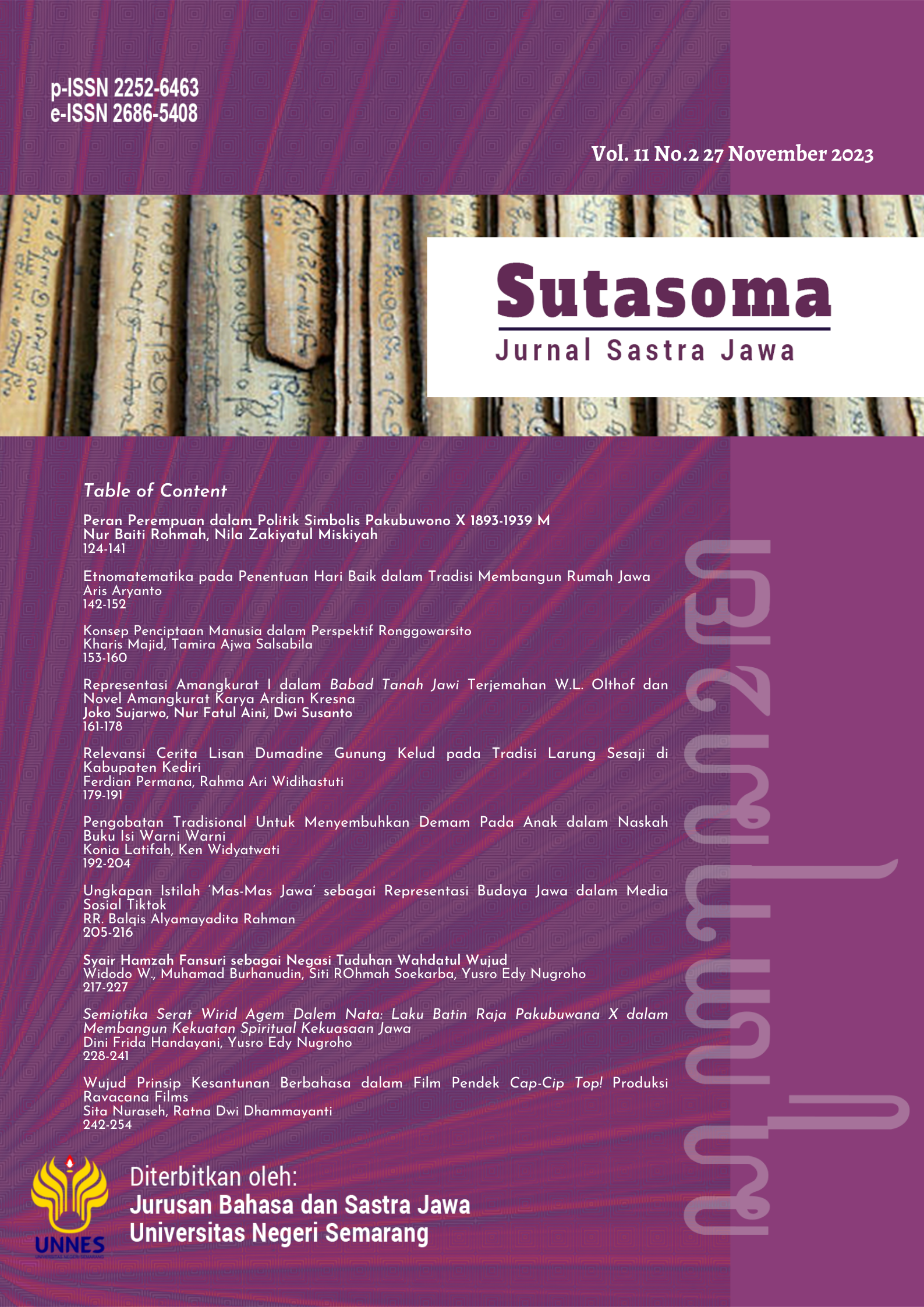Representasi Amangkurat I dalam Babad Tanah Jawi Terjemahan W. L. Olthof dan Novel Amangkurat Karya Ardian Kresna
##plugins.themes.academic_pro.article.main##
Abstract
There is a difference in the depiction of Amangkurat I in the Babad Tanah Jawi (2008) and the novel Amangkurat (2012). The discussion on the figure of Amangkurat I, specifically in recent studies, has not been widely discussed. The purpose of this study is to determine the representation of the figure of Amangkurat I in both works. This research includes a qualitative-descriptive study. The data used are in the form of text content in both literary works, the author's background, discourse on character representation, and sociology of literature. Interpretation of data is carried out in accordance with the workings of the theory of sociology of literature. The results of the research show that there is a more positive impression of the image of Amangkurat I, when compared to the novel, which appears in the babad story. This impression appeared in several events, namely the early period after the coronation, the construction of the Plered palace, the death of the Mataram tumenggung, the death of the Queen of Malang, the gift of bekisar by Prince Pekik, and the escape to Betawi. Such a narrative in the Babad Tanah Jawi can be assumed as an effort to legitimize the authorities. Then, the different depictions that appear in Amangkurat's novel show the author's partiality towards Dutch records against the story in Babad Tanah Jawi. Thus, the presence of the novel Amangkurat can be interpreted as a reaction or response by Ardian Kresna to the story in the Babad Tanah Jawi.
Keywords: Representation, Amangkurat I, Babad Tanah Jawi, Amangkurat’s novel
##plugins.themes.academic_pro.article.details##

This work is licensed under a Creative Commons Attribution-NonCommercial-ShareAlike 4.0 International License.
Untuk dapat diterima dan diterbitkan oleh Sutasoma : Jurnal Sastra Jawa, penulis yang mengirimkan naskah artikel harus menyelesaikan semua tahapan review. Dengan mengirimkan naskah, penulis menyetujui persyaratan berikut:
- Hak cipta atas artikel yang diterima diserahkan kepada Sutasoma : Jurnal Sastra Jawa selaku penerbit jurnal. Hak cipta yang dimaksud meliputi hak untuk menerbitkan artikel dalam berbagai bentuk (termasuk cetak ulang). Sutasoma : Jurnal Sastra Jawa mempertahankan hak publish atas artikel yang diterbitkan.
- Penulis diperbolehkan menyebarluaskan artikel yang telah diterbitkan dengan membagikan link/DOI artikel di Sutasoma : Jurnal Sastra Jawa]. penulis diperbolehkan untuk menggunakan artikel mereka untuk tujuan hukum yang dianggap perlu tanpa izin tertulis dari Sutasoma : Jurnal Sastra Jawa dengan pengakuan publikasi awal jurnal ini.
- Pengguna/penggunaan publik dari situs web ini akan dilisensikan ke CC BY-NC-SA (Attribution & Non-Commercial-ShareAlike).
